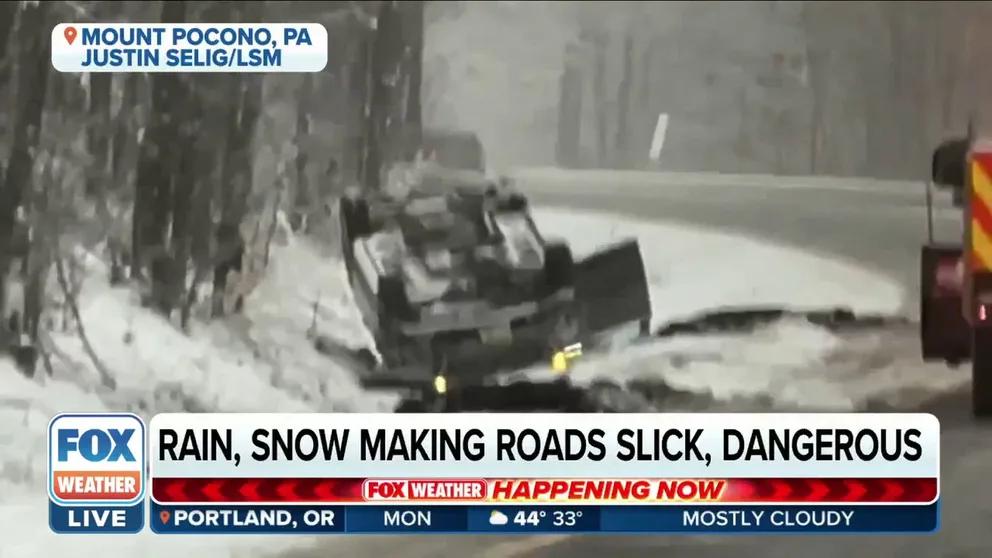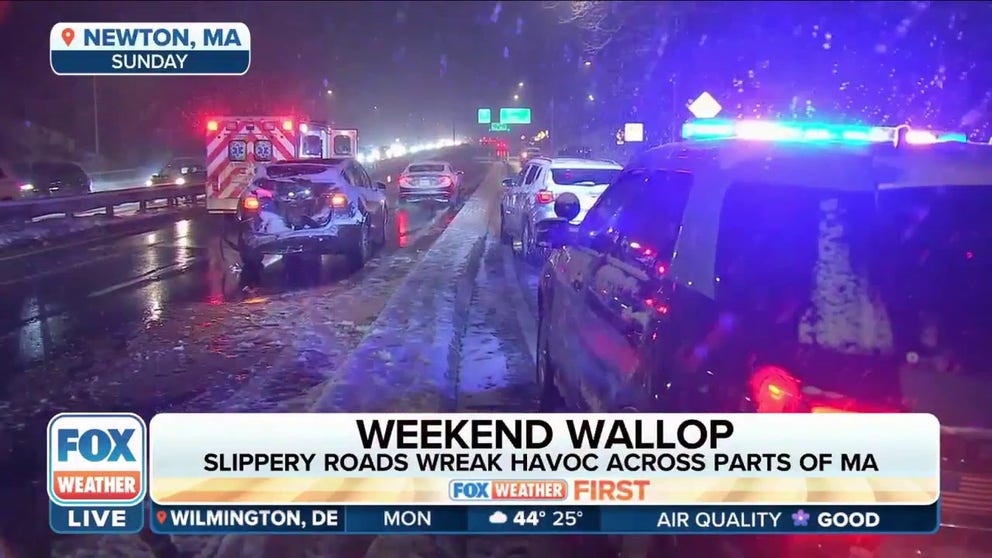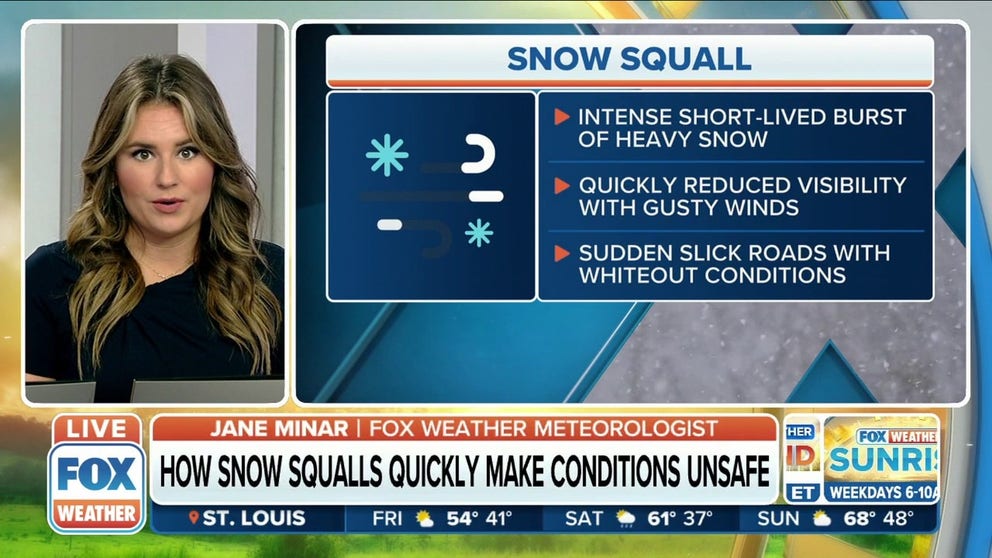Driving in light snow is just as dangerous as a major snowstorm, researchers say
A study found that more than half of all deadly snow-related crashes on roads occurred in an area that wasn't under a Winter Weather Advisory or Winter Storm Warning.
Snow and rain mix made roads slick, dangerous across parts of Northeast
A snow and rain mix made roads slick and dangerous across parts of the Northeast on Sunday, Dec. 11, 2022.
Although some people may not bat an eye at only an inch or two of snow, researchers found that driving in light snowfall can be just as dangerous as hitting the road during a major snowstorm.
A study conducted by a team of scientists from NOAA’s National Severe Storms Laboratory, the National Weather Service and the Cooperative Institute for Mesoscale Meteorological Studies (CIMMS), published in December 2019, found that only 46% of all deadly snow-related crashes on roads occurred in an area that was under a Winter Weather Advisory or Winter Storm Warning.
In other words, 54% of all snow-related fatalities on roads happened in an area that wasn't under one of those winter weather alerts, which means the snow was not heavy enough to prompt the NWS to issue any advisories or warnings.
HOW TO SAFELY DRIVE ON THE ICE AND SNOW

A 2019 study found that only 46% of all deadly snow-related crashes on roads occurred in an area that was under a Winter Weather Advisory or Winter Storm Warning. On this map, roads are displayed as blue lines, and the dots represent deaths – colored to indicate whether an advisory or warning was in place when the death occurred.
(NOAA / CIMMS)
The researchers analyzed highway accident report data from the National Transportation Safety Board in tandem with NWS Winter Weather Advisory and Winter Storm Warning archives from the 2015-16 and 2016-17 winter seasons to compile these statistics.
"We have gotten really good at predicting when a big event is going to happen and what regions it will impact," said Heather Reeves, a researcher at CIMMS who led the study. "The real danger now are these events where people don’t have to stay inside. They can still go out and live their lives, but there may be moments where they need to exercise caution."
Accumulating snow led to rough travel across parts of Massachusetts
Accumulating snow led to rough travel across parts of Massachusetts on Sunday, Dec. 11, 2022.
The NWS office in Milwaukee also conducted research of its own in November 2017, which closely aligned with the findings of the December 2019 study.
In Wisconsin, the majority of snow-related accidents in the Madison and Milwaukee areas occurred when less than 2 inches of snowfall was reported.
YOU WERE JUST INVOLVED IN A WEATHER-RELATED CRASH – NOW WHAT?
How can forecasters better alert the public?
In recent years, the NWS has taken steps to better alert the public of hazardous weather. For example, in 2018, NWS forecast offices began issuing Snow Squall Warnings to encourage drivers to delay travel until a snow squall has passed, or for those already on the road, to exit the highway at the first possible opportunity so that they're not on the road during these short-lived, but extremely dangerous, bursts of heavy snow and gusty winds.
WHAT ARE SNOW SQUALLS AND WHY ARE THEY SO DANGEROUS?
What are snow squalls and why are they so dangerous?
What are snow squalls and why are they so dangerous? FOX Weather meteorologist Jane Minar explains.
Various NWS offices also issue a type of alert called a Special Weather Statement to alert drivers of light snow or ice accumulations or even the formation of black ice.
In addition, a tool developed as part of the study by CIMMS researcher Shawn Handler is expected to help meteorologists forecast the potential for dangerous winter driving conditions. This tool is able to predict when road temperatures are below freezing, which, in turn, allows meteorologists to forecast the likelihood of snow accumulating on roads.


